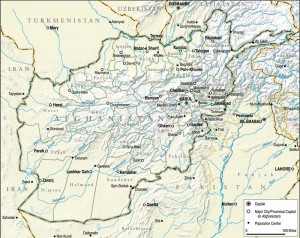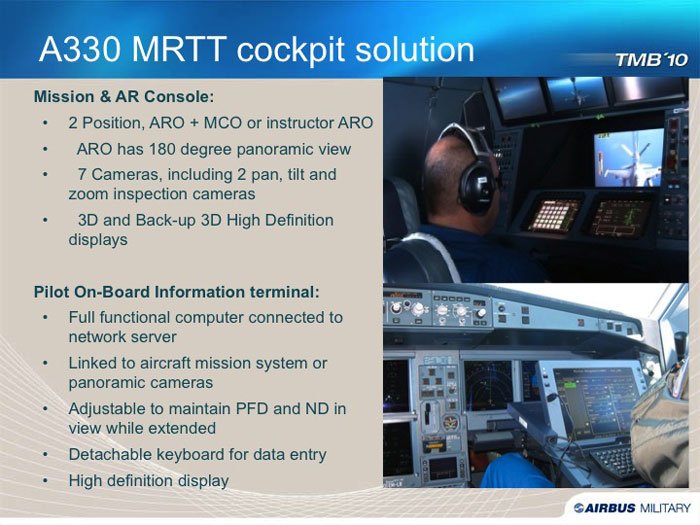2014-04-29 by Stephen Blank
Even a year ago Russia seemingly played a limited role in the Middle East.
Today Russia is vigorously advancing throughout the entire region.
America’s widely, and sadly justifiably, perceived strategic retreat, confusion, and ineptitude only account for part of this transformation. While even Russian analysts admit that US failures opened the door for Moscow, Russian policy has been tenacious, purposeful, and aligned to a genuine strategic vision if not strategy.
Moreover, Moscow expects further advances in the Middle East.
Graham Allison wrote from Sochi that a high-ranking Russian official confidently told him that Moscow believes that “when Obama sees the whites in the Iranian eyes, it will again be Russia to whom he must turn in order to stop Iran’s nuclear program without war.”[i]
Shaping a Strategic Role in the Region
Unfortunately few understand that Russia’s gains stem not merely from opportunism, though surely that is present, but are also is the result of the pursuit of core strategic objectives.
Russia has leveraged or managed the Syria crisis to its advantage. Though fully committed to the Assad regime and flooding Syria with weapons, economic assistance, and presumably intelligence support, Russia and the United States co-chaired the abortive Geneva-2 conference to fashion a political settlement to Syria’s civil war. Indeed, Moscow’s unwavering support for Assad and insistence that Assad’s opponents essentially surrender as a precondition of progress helped torpedo the conference.[ii]
Russia has played both sides of the Iranian coin. Russia has substantial economic relationships with Iran, Turkey, Cyprus, and Israel and is negotiating a huge energy deal with Iran that would effectively break the sanctions regime.[iii] Again it does so despite being a major participant in the 5+ 1 talks on Iran’s nuclearization. Here too Moscow simultaneously functions as both Iran’s prosecutor and defense council, highlighting the sheer opportunism that typifies its policies.
Weapons sales are an important tool to the pursuit of Russian influence in the region. Moscow sells weapons not only to Syria but also to Turkey, Iran, Iraq, Egypt, and is negotiating resumed arms sales to Algeria and Libya. Moscow also fully grasps that many weapons it sells to Syria or Iran then go to Hezbollah and Hamas.
Russia is expanding its naval presence in the region as well.
It has permanently reconstituted its Mediterranean Naval Squadron and repeatedly employed gunboat diplomacy to deter Western intervention in Syria and Turkish intervention in Cyprus.[iv]

Moscow has also acquired naval bases in Syria and Cyprus as well as an air base in Cyprus and evidently wants a renewed presence in Alexandria and even Montenegro to have permanent bases on the Mediterranean. Indeed, the new Egyptian government has said they were ready to franchise Russia to build a military base either in the Red Sea or the Mediterranean.[v]
Since “power projection activities are an input into the world order,” Russian force deployments into the greater Middle East and economic-political actions to gain access, influence and power there represent competitive and profound, attempts at engendering a long-term restructuring of the regional strategic order.[vi]
The energy tool is a crucial one as well in regular presence and expanded influence.
Russia has concurrently concluded major energy deals with Turkey, Israel, Lebanon, Syria, Iraq, the Kurdish Regional Government (KRG) in Northern Iraq, and is negotiating the aforementioned deal with Iran. Finally Turkey has had to set aside its policy in the Middle East and the Caucasus for the sake of expediency due to Russia’s adroit diplomacy and energy leverage.[vii]
These policies too demonstrate Russia’s tactical flexibility and opportunism in Iraq where it buys and develops energy holdings for the Iraqi government and the KRG, thus playing both sides against the middle.[viii]
Clearly, these achievements’ impressive scope and range belie explanations emphasizing merely Russia’s tactical flexibility and opportunism.
Those elements represent only one dimension of the principles animating Russian strategy and policy. The utter absence of a thorough and comprehensive analysis of Russia’s objectives, tactics, the policy instruments it possesses, the goals it has reached, and its activities’ implications from the public discussion contributes to the indecisive, groping, and vacillating U.S. foreign and defense policy in the Middle East and towards Russia.
Due to Russia’s achievements US allies like Israel, Turkey and Saudi Arabia (who is underwriting Egypt’s purchase of Russian weapons) are making deals with Russia or looking for other partners (e.g. Pakistan in Saudi Arabia’s case[ix]), signifying their growing skepticism if not worse about US policy.
These energy and arms deals give Russia legitimate entree into the complex energy rivalries around Cyprus, Israel, and Syria, Lebanon, Iraq, and Iran.
Since Moscow has already intervened in Cyprus’ quarrels with Turkey over gas finds in the Eastern Mediterranean by sending its navy to support Cyprus, and clearly seeks an air base at Paphos in Cyprus, those moves plus its gunboat diplomacy in Syria and strong support for Assad underscore the inextricability of Russia’s energy policy, diplomacy, and displays of force in this region.[x]
Therefore we cannot abstract Russia’s accomplishments from its overall objectives in the region.
Russia’s deals and achievements confirm that for Russia, if not other major actors, “Geopolitical power is less about the projection of military prowess and more about access and control of resources and infrastructure.” [xi] Russia’s energy deals in the Middle East, if not elsewhere, also demonstrate the fundamentally strategic and political motives behind its overall energy policy.
Russian Strategic Objectives in the Region
In short, Russia pursues a number of key strategic objectives in the Middle East and the Mediterranean and opportunism is seen as providing the opportunities to both pursue these objectives and enhance influence.
The first objective is to restore the perception that Russia is a true great power that is able and willing to block American initiatives, power and values, prevent the US from unilaterally consolidating any regional geopolitical order, and force Washington to engage Moscow’s interests and even its veto power through the UN on US policies.
The second objective is to gain the status in Arab eyes of such a great power and thus demonstrating to all foreign and domestic audiences its inherent and unconstrained ability to conduct a truly “independent” great power policy.[xii]
The third objective is to create a bloc of states aligned to it that opposes US positions on the Middle East. Moscow aims. In particular it is attempting to create such a bloc with Iran, the Iraqi government, and Assad’s Syria.

This amounts to a pro-Shiite bloc against Sunni fundamentalism embodied by Saudi Arabia. Arguably it is no accident that this grouping exactly resembles the Rejectionist Front of the late 1970s and 1980s that opposed the Camp David treaty and US policy in the Middle East under Brezhnev.
The fourth objective is to demonstrate at home and abroad its reliability as an ally and its staunch resolve to fight terrorism while simultaneously pretending to be an exemplar of inter-civilizational understanding and the only true exemplar of universal religious values.
The fifth objective it to obtain, through energy and arms deals, as well as the judicious display of force enduring leverage within if not over these states that gives it a permanent base of influence upon their policies. By enhancing thereby the regime’s domestic standing as a successful exponent of Russia’s great power interests and resolution in fighting terrorism while not letting itself be perceived as an enemy of Islam-a major consideration given its growing and large Muslim minority
Russia pursues these goals through the medium of the utmost tactical flexibility.
Russia is not permanently wedded to any regime or state and seeks influence and leverage where the possibilities emerge.
Russia deems it an advantage that it not burdened by support for human rights imperatives but that also it has no principled commitment either to the principles of sovereignty and territorial integrity of other states or to their stability, which might operate as barriers to strategic maneuver.
Editor’s Note: Dr. Blank’s more extensive look at these issues appears next month in the Israeli Journal of Foreign Affairs.
An example of the dynamics which Blank discusses is the Iranian-Russian relationship. In a piece from the Iranian source Press TV, the centrality of the alliance was recently highlighted as follows:
Both Russia and Iran made it clear that they would support Syria in the case of a US aggression and this was certainly the main reason that pushed the Obama Administration to have second thoughts about an attack on Syria.
Although Syria and Iran have been the targets of the latest Western threats, Moscow knows that Russia and China are the ultimate objectives of the US military and diplomatic strategy. In recent years, Russia has set up a military alliance, the Collective Security Treaty Organization (CSTO), which has become a pariah for the West and NATO.
The war on Serbia, the independence of Kosovo, US support for pro-Western forces in Georgia, Ukraine and Azerbaijan and the deployment of parts of a US defence missile system in Europe are clear evidences of Western contempt for Russia and its interests. The US has also pledged to undermine Moscow’s Eurasia Union project, which it is seen as a recreation of the former Soviet Union.
Against the background of US warmongering policies, Russia and Iran have expanded their relations significantly in recent months. The offensive led by the US and its allies, especially France, in the Middle East has destabilized the entire region and it is a fact that is driving both nations into an alliance. Russian Deputy Prime Minister Dimitry Rogozin warned last January, “If anything happens to Iran and this country is drawn into any sort of political or military difficulties, it would be a direct threat to Russia’s national security.”
Andrei Arashev, the deputy director of the influential Russian think tank Strategic Culture Foundation, said in June that the intervention of the United States in Central Asia and the Middle East would endanger the territorial integrity of Russia, China and Iran.
Due to this fact, Arashev called for a “strategic alliance” between Iran and Russia: “The destruction of Arab states in the immediate vicinity of Iran and on the distant periphery of Russia and China, the perspective of a military intervention in Syria or the fall of Syria into chaos would have a direct impact on the national security of our countries.
To put it another way, in order to prevent combat on the streets of Iran and then on Russian streets, we must stand on the side of our ally Syria”, wsws.org quoted him as saying. Russia and Iran are already cooperating on security issues in different regions. Both countries share important interests. They want to strengthen security in these nearby regions and prevent extremist groups from taking over power in Afghanistan, Syria and other nations.
[i] Graham Allison, “Putin’s Olympic Gamble,” The National interest, February 12, 2014, http://nationalinterest.org/commentary/putins-olympic-gamble-9869?page=1
[ii] Anne Gearan and Loveday Morris, “Syria Talks End on a Note of Uncertainty, U.S. Frustration With Russia,” Washington Post, February 15, 2014, www.washingtonpost.com
[iii] Open Source Center, OSC Analysis, Foreign Broadcast Information Service, Central Eurasia, Henceforth, FBISSOV, January 31, 2014
[iv] Stephen Blank, ”Putin’s Agenda: Gunboat Diplomacy,” Eurasia Daily Monitor, December 12, 2011
[v] “Egypt Turns to Russia to Buy $4 billion Weapons Supplies,” Middle East Monitor, November 9, 2013, https://www.middleeastmonitor.com/news/africa/8246-egypt-turns-to-russia-to-buy-4-billion-weapons-supplies-; Theodore Karasik, “Arms to Egypt, From Russia With Love,” Al-Arabiya, November 20, 2013, http://english.alarabiya.net/en/views/news/middle-east/2013/11/20/Arms-to-Egypt-from-Russia-with-love.html; “Government refuses Russia’s request to set up a military base in Montenegro,” Independent Balkan News Agency, December 20, 2013, http://www.balkaneu.com/government-refuses-russias-request-set-military-base-montenegro/
[vi] Henk Houweling and Mehdi Parvizi Amineh, “Introduction,” Mehdi Parvizi Amineh and Henk Houweling, Eds., Central Eurasia in Global Politics: Conflict, Security, and Development, International Studies in Sociology and Social Anthropology, Leiden, the Netherlands: Brill, 2004, p. 15.
[vii] Fehim Tastekin, Washington, Al-Monitor, in English, February 9, 2014, FBIS SOV, February 9, 2014
[viii] Stephen Blank, ”Russia’s High-Stakes Game in Iraq: Expanding Their Role in the Middle East,” Second Line of Defense, January 19, 2014, www.sldinfo.com
[ix] Zachary Keck, “Saudi Arabia May Buy Pakistani-Chinese Fighter Jets.” The Diplomat, January 24, 2014, www.thediplomat.com; “Saudi Nuclear Weapons ‘on order’ From Pakistan,” BBC News Middle East, November 6, 2013,” http://www.bbc.co.uk/news/world-middle-east-24823846
[x] Stephen Blank, ”Russia Seeks Naval and Air Bases in Cyprus,” Eurasia Daily Monitor, July 17, 2013; Jean Christou, ”Greece and Russia Rally Behind Cyprus,” Cyprus Mail, October 2, 2011, http://www.cyprus-mail.com/cyprus/greece-and-russia-rally-behind-cyprus/20111002; “Turkey, Israel, Greece and Russia Mobilizing Over Cyprus,” www.Asianews.it, October 5, 2011; Moscow, Interfax, in Russian, in English, May 7, 2012, FBIS SOV, May 7, 2012
[xi] Corey Johnson and B. Matthew Derrick, “A Splintered Heartland: Russia, Europe and the Geopolitics of Networked Energy Infrastructure,” Geopolitics, XVII, NO. 3, 2012, p. 495
[xii] Sergei Lavrov, “Vneshnepoliticheskaya Samostoyatel’nost’ Rossii Bezuslovnyi Imperativ,” (Russia’s Foreign Policy Autonomy is an Unconditional Imperative) Moskovskiye Novosti, January 19, 2007, http://www.mn.ru/issue.php?2007-1-56;








